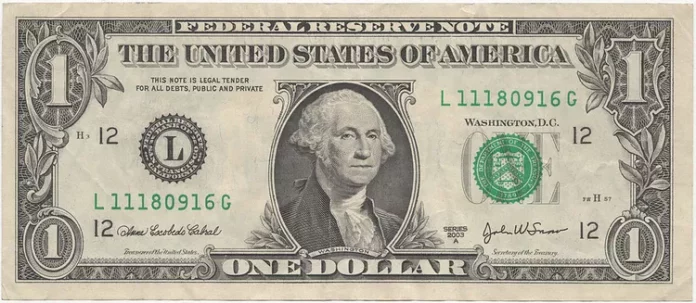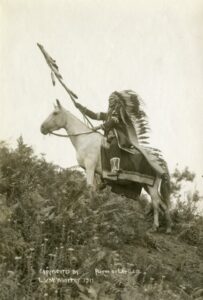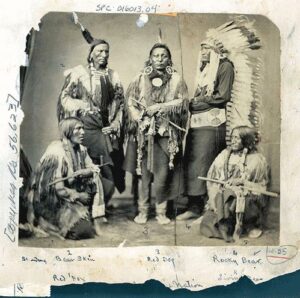
(version française)
The attack and the reprisals
The Treasury Secretary determines who will appear on US bank notes. One of the criteria is that the character must have died. Another is that he be well known to the public. Thus it is George Washington who adorns the most used bill, that of an American dollar. Now, ask anyone you want and he/she will tell you that it was one of the U.S. presidents, with a little luck he/she will add that it was the first one, at the very end of the 18th century. Very, very few people know that he is also called “the destroyer of cities” – Hanadahguyus – the name the Iroquois Indians gave him following the “first genocidal campaign in the history of the United States” according to American historian Rhiannon Koehler, specialist in Native American issues. [Hostile Nations. Quantifying the Destruction of the Sullivan-Clinton Genocide of 1779, Rhiannon Koehler, The American Indian Quarterly, University of Nebraska Press, Volume 42, Number 4, Fall 2018 pp. 427-453]
As presented at the National Museum of the American Indian in New York: “During the summer of 1779, George Washington ordered his generals Clinton and Sullivan to attack and burn Haudenosaunce (Iroquois) town. The Cayuga clan mothers learned of the army’s approach. They asked Oneida leaders allied with the Americans to plead with the army to spare their towns. Four Oneida leaders met with general Sullivan, but he would not listen. The American armies destroyed 40 Haudenosaunce (Iroquois) towns and burned their harvest while residents fled. At Chonodote, or Peach town, or the army burned 1,500 peach trees.”
More than 5,000 Iroquois had to take refuge in British Canada, while those who remained behind were unable to withstand the terrible winter of 1779–1780. This raid by the forces of the new state – the Thirteen Colonies which gave birth to the United States of America – was in fact a response to the numerous attacks and massacres by Iroquois warriors – allied with pro-British loyalists – the previous year in northern Pennsylvania and central New York.
george washington was also called “the destroyer of cities”
The occupation
In turn, and more fundamentally, these operations were provoked by, according to the U.S. historian and professor Colin G. Calloway, also a specialist in Native American issues, “Washington [who] had a lifelong obsession with getting Indian land, either for himself or for his nation, and initiated policies and campaigns that had devastating effects in Indian country. The growth of the nation demanded the dispossession of Indian people. Washington hoped the process could be bloodless and that Indian people would give up their lands for a “fair” price and move away. But if Indians refused and resisted, as they often did, he felt he had no choice but to “extirpate” them and that the expeditions he sent to destroy Indian towns were therefore entirely justified.”

The military officers under Washington – who, ten years before being becoming president, was then the commander in chief of the new US army – spoke of “extirpat[ing] those hell-hounds from off the face of the Earth.” At the time they were already demonizing. “Using the UN 1948 definition of genocide and the framework of settler-colonialism, [Rhiannon Koehler] examines the United States‘ broad-scale effort to annihilate the Haudenosaunee [Iroquois]. It argues that their systematic destruction was part of a broader ideological initiative during which US leaders eschewed diplomacy in favor of denying the authority, sovereignty, and humanity of the Iroquois.”
But let’s let the Indians themselves speak, starting with Inshata-Theumba (Bright Eyes), artist, writer and teacher from the Omaha tribe in Nebraska – from her book “The Indian Question” (1880)
“When the Indian, being a man and not a child or thing, or merely an anium nal, as some of the would-be civilizers have termed him, fights for his property, liberty, and life, they call him a savage. When the first settlers in this country fought for their property , liberty, and lives, they were called heroes. When the Indian in fighting this great nation wins a battle it is called a massacre; when this great nation in fighting the Indians wins, it is called victory.”
WHEN THE INDIAN FIGHTS FOR HIS PROPERTY, FREEDOM AND LIFE, THEY CALL HIM A savage
Peo Peo T’Olikt (Bird Alighting) of the Nimi´ipuu (Nez Perce) tribe recounts the attack of July 1, 1877 against the camp of Chief Looking Glass
“After the soldiers left, we returned to our ruined homes. Several teepees had been burned or otherwise ruined. Much had been carried away and many objects destroyed or badly damaged. Brass buckets always carefully kept by the women, lay battered, smashed… Growing gardens tramples and destroyed. Nearly all our horses were taken and every hoof of cattle driven away.”
Sunka-Luta, (Red Dog) of the Oglala Lakota – in favor of negotiations with the United States – from a speech given on June 16, 1870 at the Cooper Union in New York after the visit of the Oglala Lakota delegation to Washington D.C.
“I have but few words to say to you, my friends. When the good spirit raised us, he raised us with good men for counsels and he raised you with good men for counsels. But yours are all the time getting bad, while ours remain good… When the Great Father [the President] first sent out men to our people, I was poor and thin; now I am large and stout and fat. It is because so many liars have been sent out there, and I have been stuffed full with their lies.”
Double standards, cruelty and propaganda already existed.
The settlement of occupied territories
As told by a third specialist in Native American issues, Adam DJ Brett, a doctoral student at Syracuse University, “with his “Sullivan-Clinton Scorched Earth Campaign.” Washington‘s soldiers were paid with land.” [Revisiting George Washington’s assault on the Haudenosaunee 240 Years Later, Adam DJ Brett]

THESE MILITARY LEADERS ORDERED THE SOLDIERS TO ENSURE THE TOTAL DESTRUCTION OF IROQUOIA IN ORDER TO LEAVE THE LANDS FREE FOR OCCUPATION BY SETTLERS
Brett and many Indian defense organizations speak out against this settler narrative, which is based on the 1823 decision of the United States Supreme Court in the case of “Johnson v. McIntosh” – two settlers who competed for the same land – establishing the “doctrine of discovery” according to which “discovery of territory previously unknown to Europeans gave the discovering nation title to that territory against all other European nations, and this title could be perfected by possession”. This was to settle territorial disputes between English and French invaders.
Note that Chief Justice John Marshall “had large real estate holdings that would have been affected if the case were decided in favor of Johnson”, who had purchased the disputed land from Indians while McIntosh had received it as a concession from the United States. Thus, the conquest took precedence over the purchase.
To assert their rights to the lands, effectively stolen, the Spanish and Portuguese conquerors relied instead on papal bulls, such as that of Pope Nicholas V who in 1452 issued Dum Diversas, which authorized King Afonso V of Portugal to “subjugate the Saracens and pagans and any other unbelievers and enemies of Christ”, and “reduce their persons to perpetual servitude”, to take their belongings, including land, “to convert them to you, and your use, and your successors the Kings of Portugal.”
Or that in 1455, Romanus Pontifex, of Pope Nicholas V “which extended Portugal‘s authority to conquer the lands of infidels and pagans for “the salvation of all” in order to “pardon … their souls”. And finally, in 1493, Pope Alexander VI’s Inter Caetera bull “drew a north-south line 100 leagues West of the Cape Verde Islands and gave the Spanish Crown exclusive rights to travel and trade west of that line, and to bring under your sway the said mainland and islands with their residents and inhabitants and to bring them to the Catholic faith”, the rest belonging to the Portuguese sphere.
Adam Brett as well as Philip Arnold, professor of religion at Syracuse University and Sandra Bigtree, member of the Mohawk Indian Nation, launch an appeal: “200 years after its ruling, there is an urgent need to revisit Johnson v. M’Intosh. The authors illuminate what Chief Justice John Marshall set in motion and how it still negatively impacts our world today.”… till the Middle East. [“Introduction to the 200 Years of Johnson v. M’Intosh: Law, Religion, and Native American Lands Series.” March 10, 2023]










[…] Gaza: in the tradition of George Washington Haiti Liberte […]